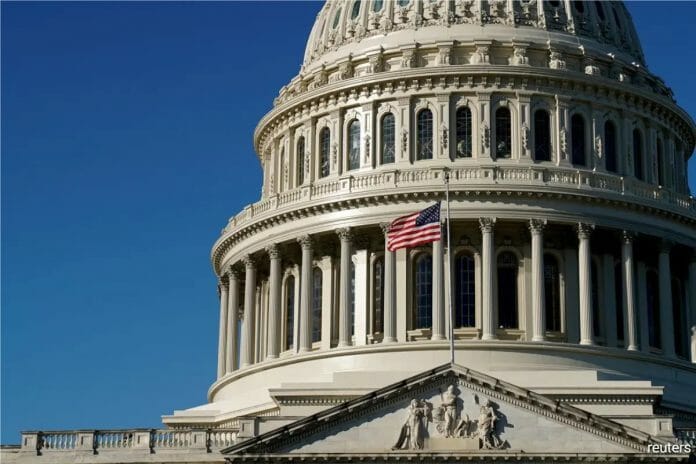A breach of the U.S. debt ceiling could cause significant disruptions to financial markets that would damage the economic conditions faced by households and businesses.
The closer the U.S. gets to the debt ceiling, the more economists expect market-stress indicators to worsen, leading to increased volatility in equity and corporate bond markets and inhibiting firms’ ability to finance themselves and engage in the productive investment that is essential for extending the current expansion.
On Saturday (May 20), Speaker Kevin McCarthy signalled that he doesn’t think debt limit negotiations can move forward until President Biden returns to Washington. “Unfortunately, the White House moved backwards. I don’t think we’re going to be able to move forward until the president can get back in the country,” McCarthy said.
The White House responded in a statement, turning the tables on McCarthy and claiming that his team “put on the table an offer that was a big step back and contained a set of extreme partisan demands that could never pass both Houses of Congress. Let’s be clear: The President’s team is ready to meet any time. And, let’s be serious about what can pass in a bipartisan manner, get to the President’s desk and reduce the deficit.”
Bank Muamalat Malaysia Bhd chief economist Mohd Afzanizam Abdul Rashid said recently the failure to reach an agreement on the US debt ceiling could easily lead to a risk-off environment, which would hurt emerging market currencies like the ringgit.
Investors will closely monitor Tuesday’s discussions on the US debt ceiling. It was reported that US Treasury Secretary Janet Yellen said that the US administration and congressional Republicans were making progress in their negotiations over federal spending and raising the debt limit but talks seem to have stalled.
Yellen, however, reiterated that it’s still likely that the US could default on its debt obligations possibly as soon as June 1 if the US Congress doesn’t act.
Mohd Afzanizam noted that a slew of China data, namely the country’s fixed asset investment, retail sales, and industrial production for April may be positive to buffer the possibility of a diverse impact on the Malaysian economy.
“Perhaps this may support the ringgit as an improving Chinese economy would help sustain global growth, which can have a positive spillover effect on the Malaysian economy,” he said.
Risks of a brief default
Should the U.S. breach the debt ceiling, the costs to the economy would be likely to be quickly felt.
Moody’s Analytics Chief Economist Mark Zandi predicted that even with a brief default, a “crisis, characterized by spiking interest rates and plunging equity prices, would be ignited. Short-term funding markets, which are essential to the flow of credit that helps finance the economy’s day-to-day activities, likely would shut down as well.” Right after a default, Fitch Ratings reports that “the US’s rating would be moved to “‘RD’ (Restricted Default) [and] affected Treasury securities would carry a ‘D’ rating until the default was cured.”
According to Moody’s, even a short debt limit breach could lead to a decline in real GDP, nearly 2 million lost jobs, and an increase in the unemployment rate to nearly 5 percent from its current level of 3.5 percent.
Moody’s also notes that even a short debt limit breach could lead to lastingly higher interest costs: “If Treasury securities are no longer perceived as risk-free by global investors, future generations of Americans would pay a steep economic price.”
A Brookings analysis noted that losing the unparalleled safety and liquidity of the Treasury market due to default could translate into over $750 billion in higher federal borrowing costs over the next decade.
Peterson Institute economists have argued that lower demand for Treasuries would weaken the dollar’s role in the global economy: “This weakening of official dollar purchases would likely increase volatility in the dollar’s value against other currencies and decrease liquidity, prompting investors to reduce their holdings of dollars in any form.”
Risks of a prolonged default
The costs would be even greater under a protracted default. A simulation by The US Council of Economic Advisers on the effect of a protracted default shows an immediate, sharp recession on the order of the Great Recession. The CEA simulation was done using FRB/US assuming negative shocks to consumer and business confidence that mimic those experienced during the Great Recession, increased interest rate premiums, and 20-30 percent cutbacks in government spending. Given the current elevated level of inflation, the Taylor rule-governed federal funds rate reacts slowly to the economic calamity.
In 2023 Q3, the first full quarter of the simulated debt ceiling breach, the stock market plummets 45 percent, leading to a hit to retirement accounts; meanwhile, consumer and business confidence take substantial hits, leading to a pullback in consumption and investment. Unemployment increases 5 percentage points as consumers cut consumption, and businesses lay off workers.
Unlike the Great Recession and the COVID recession, the government is unable to help consumers and businesses. As the breach continues, the economy heals slowly, and unemployment is still 3 percentage points higher at the end of 2023.
A recent analysis by Moody’s, using a different model of the macroeconomy, arrived at a similar conclusion. They predict that under a clean debt ceiling increase, job growth continues over the next few quarters, adding 900,000 jobs.
But under a protracted default scenario, job losses amount to almost 8 million, an extremely stark difference of similar magnitudes to our own modelling.
Without the ability to spend on counter-cyclical measures such as extended unemployment insurance, Federal and state governments would be hamstrung in responding to this turmoil and unable to buffer households from the impacts.
Neither would households be able to borrow through the private sector as the interest rates on the financial instruments that households and businesses use—Treasury bonds, mortgages, and credit card interest rates—would skyrocket due to risks of an uncertain future.
While policy makers have thus far, in the long history of our Nation, avoided inflicting such damage on the American and even global economies, virtually every analysis we have seen finds that default leads to deep, immediate recessionary conditions.
Economists may not agree on much, but when it comes to the magnitude of risks invoked by closely approaching or breaching the debt ceiling, BusinessToday shares this deeply troubling consensus.









